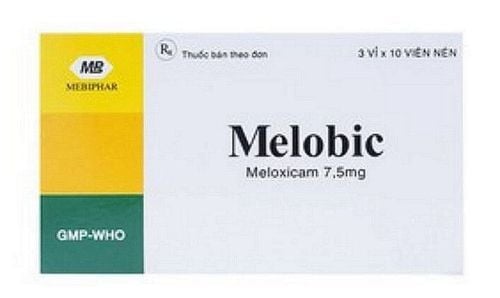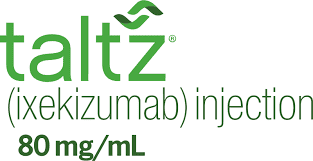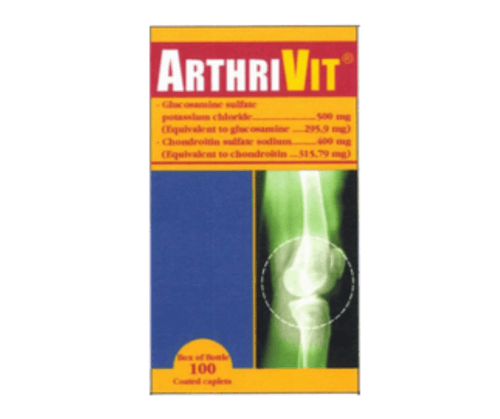This is an automatically translated article.
Celecoxib is a non-steroidal anti-inflammatory agent that selectively inhibits COX-2 enzymes used very commonly in clinical practice. This active ingredient is in the product Apibrex 400. So how is Apibrex 400mg indicated and what issues should patients pay attention to?
1. What is Apibrex 400 mg?
Apibrex 400mg drug is prepared in the form of hard capsules with the main ingredient being the active ingredient Celecoxib 400mg. Apibrex 400 is a product of Apimed Pharmaceutical Joint Stock Company (Vietnam). The active ingredient Celecoxib in Apibrex 400 is a non-steroidal anti-inflammatory (or NSAID) and is commonly used to treat arthritis. The mechanism of action of Celecoxib involves Prostaglandin, a substance that plays an important role in the inflammatory process with manifestations such as swelling, heat, redness and joint pain. Celecoxib blocks the enzyme that forms prostaglandins (cyclooxygenase-2), thereby reducing the concentration of this substance in the blood, so it supports anti-inflammatory and reduces the accompanying swelling, redness, pain.
2. Indications and contraindications of Apibrex 400mg
Apibrex 400 products are indicated in the following cases:
Symptomatic treatment of osteoarthritis and rheumatoid arthritis; Symptomatic treatment of ankylosing spondylitis; Apibrex 400 is also used in cases where acute pain control is required. The use of Apibrex 400mg is contraindicated in the following cases:
Patients with hypersensitivity to Celecoxib, the active ingredient Sulfonamide or any of the ingredients in Apibrex 400; Patients with active peptic ulcer or gastrointestinal bleeding; Ischemic heart disease, peripheral vascular disease or cerebrovascular disease; NYHA class II to IV congestive heart failure; Severe impairment of renal function (creatinine clearance less than 30ml/min); Severe liver failure (plasma albumin less than 25g/l or Child - Pugh score ≥ 10).
3. Dosage, how to take Apibrex 400mg
Product Apibrex 400 produced in hard capsule form to be taken orally after meals with the following dosage:
Rheumatoid arthritis: 100-200mg/time x 2 times/day; Mild to moderate hepatic impairment: Adjust dose by half; Osteoarthritis: 200mg/time x 1 time/day or 100mg/time x 2 times/day. Apibrex 400 Overdose and Treatment:
Manifestations of overdosage with nonsteroidal anti-inflammatory drugs such as Celecoxib may include lethargy, lethargy, nausea, vomiting, and epigastric pain... In addition, cases Severe cases can cause gastrointestinal bleeding or, more rarely, hypertension, acute renal failure, respiratory depression and coma; Treatment of Apibrex 400mg overdose is mainly symptomatic and supportive because there is no specific antidote. During the first 4 hours after an Apibrex 400 overdose, the physician may prescribe emetic therapy and/or the use of activated charcoal or osmotic bleach. It is not known whether Celecoxib is eliminated through hemodialysis, but because of its high plasma protein binding, the use of forced diuresis, urine alkalinization, hemodialysis, or blood transfusion is not known. may not be effective.
4. Side effects of Apibrex 400
Celecoxib does not affect platelet function, therefore Apibrex 400 does not affect blood clotting leading to abnormal bleeding adverse effects like other NSAIDs.
The most common side effects of Apibrex 400 include:
Headache, epigastric pain, indigestion, diarrhea, nausea, flatulence; Insomnia; Fainting; Renal failure, heart failure, severe progressive hypertension; Chest pain; Tinnitus, deafness; Gastrointestinal ulcers, gastrointestinal bleeding; Glare; Concerned; Increased sensitivity to light; Weight gain, water retention; Flu-like symptoms; Dizziness and weakness. Allergic reactions may occur when using Apibrex 400 . At the same time, people with a history of allergy to Sulfonamides (such as Bactrim), Aspirin or other NSAIDs may be cross-allergic to Celecoxib, so Apibrex 400 should not be taken.
5. Drug interactions of Apibrex 400
Celecoxib is metabolised by cytochrome P450 CYP2C9 in the liver. Therefore, concomitant use of Apibrex 400 with these enzyme inhibitors may affect the pharmacokinetics of Celecoxib and therefore caution should be exercised when these drugs are co-administered. In addition, Celecoxib inhibits cytochrome P450 CYP2D6 so there is a potential for interactions when Apibrex 400 is used in combination with drugs metabolised by P450 CYP2D6.
Nonsteroidal anti-inflammatory drugs such as Apibrex 400 may reduce the antihypertensive effect of angiotensin-converting enzyme inhibitors.
Apibrex 400 may reduce the sodium excretion effect of the diuretics Furosemide and Thiazide in some patients, possibly related to a mechanism of inhibition of prostaglandin synthesis and resulting in an increased risk of renal failure.
Although Celecoxib can be used with low-dose aspirin, its concomitant use may increase the risk of peptic ulcers or other complications. Because of the lack of antiplatelet effect, Apibrex 400 cannot be a substitute for Aspirin in the prevention of cardiovascular risk.
Concomitant administration of Apibrex 400 with fluconazole may lead to a significant increase in plasma celecoxib concentrations.
Celecoxib may decrease the renal clearance of Lithium, leading to increased plasma concentrations of lithium. Therefore, patients receiving Lithium and Apibrex 400 concomitantly should be closely monitored for symptoms of lithium toxicity and require an appropriate dose adjustment.
Bleeding complications associated with increased prothrombin time have occurred in some patients receiving Apibrex 400 concomitantly with warfarin. Therefore, patients with the combination of these two drugs should be periodically monitored for coagulation tests such as prothrombin time, especially during the first period of treatment or when the dose is changed.
6. Be careful when using Apibrex 400
Use caution when administering Apibrex 400 to patients with a history of bronchial asthma and allergy to Aspirin or other NSAIDs because of the increased risk of anaphylaxis.
Caution should be exercised when administering Apibrex 400 to elderly or debilitated patients because of the higher risk of gastrointestinal bleeding and impaired renal function in the elderly.
Celecoxib may be nephrotoxic, especially in high-risk patients such as patients with heart failure and impaired liver and kidney function. Therefore, special care should be taken when administering Apibrex 400 to these subjects.
Caution should be exercised when prescribing Apibrex 400 in patients with edema, abnormal increase in fluid retention (found in heart failure and renal failure) because Celecoxib has a side effect of causing fluid retention, so it can make the condition worse.
It is not known if Celecoxib reduces the colorectal cancer risk associated with familial adenomatous polyposis, so this patient still requires usual care and monitoring, including measures methods such as colonoscopy, prophylactic colectomy (when needed).
Celecoxib has no antiplatelet activity and therefore does not prevent the progression of ischemic cardiomyopathy.
There are insufficient data on the use of Celecoxib in women during the first trimester of pregnancy. Therefore, Apibrex 400 should only be used during the first 3 months of pregnancy when prescribed by a doctor. Since it is not known whether Celecoxib is excreted in human milk, caution should be exercised when Apibrex 400 is administered to a nursing woman during lactation.
Please dial HOTLINE for more information or register for an appointment HERE. Download MyVinmec app to make appointments faster and to manage your bookings easily.













